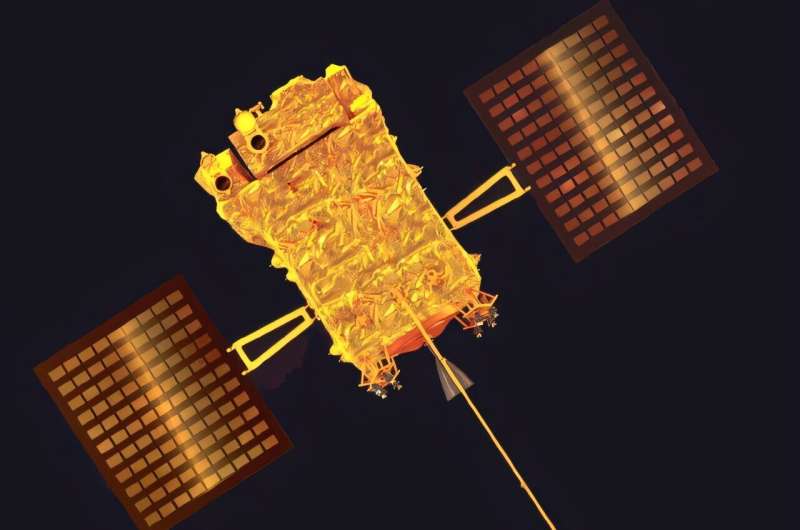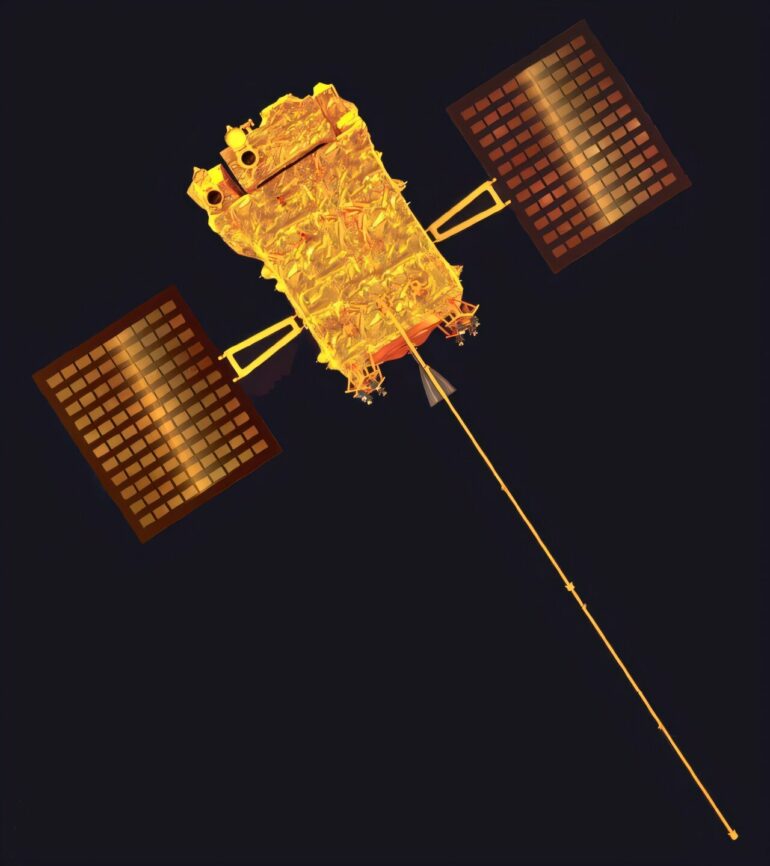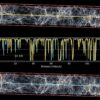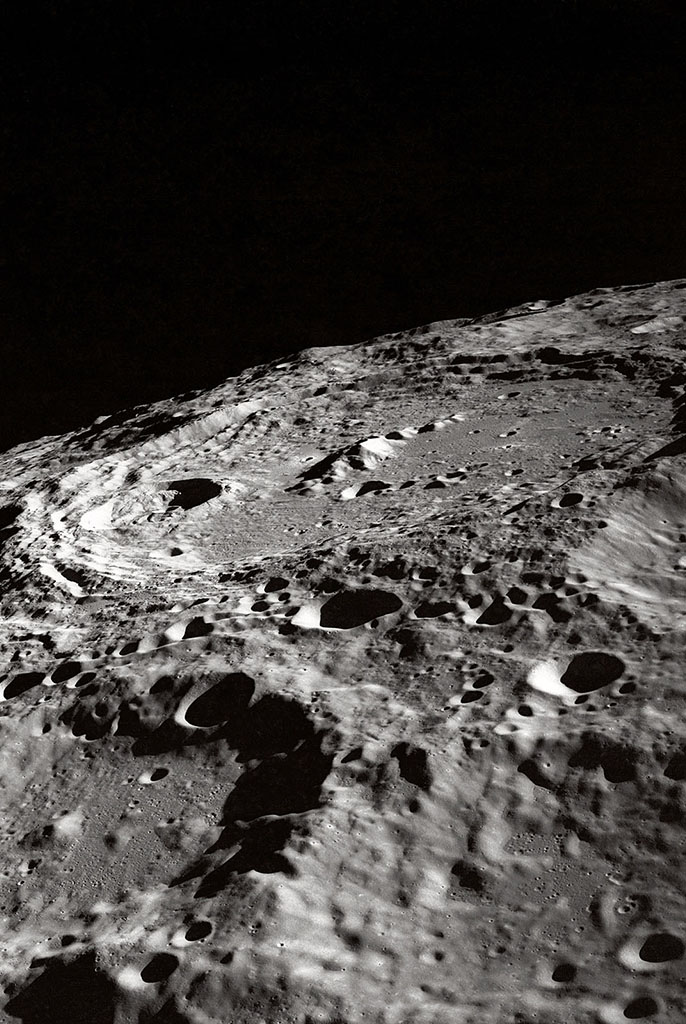When the sun hurled enormous amounts of radiation into space in an explosive eruption on February 22, 2024, the Indian space probe Aditya-L1, launched a few months earlier, was watching closely—and thus captured the first images of such a flare in the lowermost solar atmosphere.
Unlike Aditya, other solar observatories are “blind” at this distance from the sun, where the flares leave the solar surface. The new data will therefore help to improve our understanding of how flares form and how they propagate through the different layers of the solar atmosphere.
Among the solar probes in space, the Aidyta-L1 spacecraft is a newcomer. The solar observatory was only launched into space in September 2023 and took up its observation post at the near-Earth equilibrium point L1 between Earth and the sun shortly after.
After the initial commissioning of the seven telescopes and scientific instruments on board, the probe did not have to wait long for rewarding work: on February 22, 2024, there was a huge burst of radiation on the side of the sun facing the Earth. Researchers classify the flare as category X6.3 ranking it among the most energetic radiation bursts.
On Earth, eruptions of this kind can affect the operation of satellites, power grids, and radio communications. And a few months later, spectacular auroras, which could even be seen in southern Europe, were accompanied by similarly strong flares. Other space observatories, such as NASA’s Solar Dynamics Observatory (SDO) and ESA’s Solar Orbiter, as well as Earth-based telescopes, also turned their attention to the spectacular event.
Watching a flare erupt from the sun
The Solar Orbiter, in which the Max Planck Institute for Solar System Research is also involved, is much closer to the sun at a maximum of 42 million kilometers than Aditya-L1 at around 150 million kilometers. However, Aditya has another advantage: it sees where the flares originate. As a flare leaves the solar surface, it passes through various zones, starting from the surface of the sun at around 5,800°C and ending in the corona, which is more than 1,000 million degrees Celsius hot.
Because of the extreme temperature differences, the particle stream shines in different wavelengths, from the wavelength range visible to humans when it leaves the surface, through the ultraviolet range when it heats up to several tens to hundreds of thousands of degrees Celsius, to the X-ray range when it reaches the corona. Why the plasma gets hotter and hotter the further it moves away from the sun is probably due to the sun’s constant energy eruptions, which heat up their surroundings.
Both satellites, the Solar Orbiter and Aditya, carry a range of instruments that observe the flare as it moves away from the sun and through the electromagnetic spectrum. Aditya-L1 has a special eye for long-wave UV light at 200 to 400 nanometers with the Solar Ultraviolet Imaging Telescope (Suit), and thus sees the region in which a flare erupts from the surface. This so-called lower chromosphere has not been accessible to researchers with this level of detail until now.

The Indian space probe Adiyta-L1. © ISRO
“It is a great stroke of luck that Aditya-L1 was able to witness such a strong flare right at the beginning of its research career,” says Sami Solanki, director at MPS and co-author of the current research published in The Astrophysical Journal Letters. “Together with observations from other probes and telescopes, this for the first time provides a complete picture of the processes that occur in different layers of the solar atmosphere during a flare,” he adds.
Discover the latest in science, tech, and space with over 100,000 subscribers who rely on Phys.org for daily insights.
Sign up for our free newsletter and get updates on breakthroughs,
innovations, and research that matter—daily or weekly.
The flare on February 22, 2024, originated in a region in the sun’s northern hemisphere of the among a group of sunspots. It lasted about 35 minutes and reached its peak at around 22:34 (UTC). In the SUIT images, during this period, bright flashes can be seen at two closely adjacent locations.
For the current publication, the team also analyzed data from Aditya’s spectrometer Solar Low Energy X-ray Spectrometer (SoLEXS) as well as data from other space probes and ground-based solar observatories. In this way, the team was able to track how the released energy propagates through the different layers of the solar atmosphere. For example, the analysis shows that the flare in the lower solar atmosphere is directly accompanied by a temperature increase in the outer atmosphere, the corona.
The Aditya-L1 spacecraft is a project of the Indian Space Research Organization (ISRO). The concept of the Solar Ultraviolet Imaging Telescope (SUIT) was originally envisaged by the MPS; the instrument was designed, developed and built by the Inter-University Center for Astronomy and Astrophysics in Pune, India. The current publication was led by the same research institution. Three MPS scientists are members of the SUIT team.
More information:
Soumya Roy et al, Near- and Mid-ultraviolet Observations of X-6.3 Flare on 2024 February 22 Recorded by the Solar Ultraviolet Imaging Telescope on board Aditya-L1, The Astrophysical Journal Letters (2025). DOI: 10.3847/2041-8213/adb0be
Provided by
Max Planck Society
Citation:
Indian spacecraft Aditya-L1 observes massive solar flare (2025, February 28)



